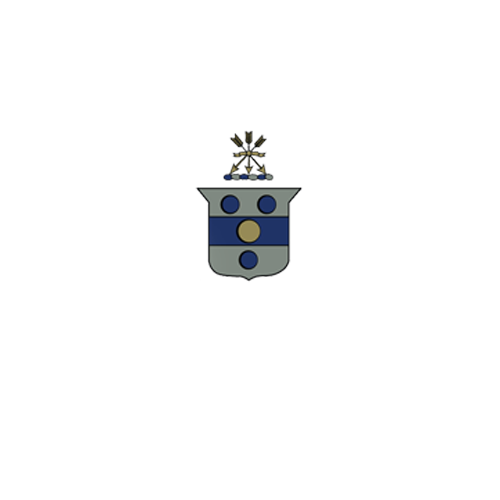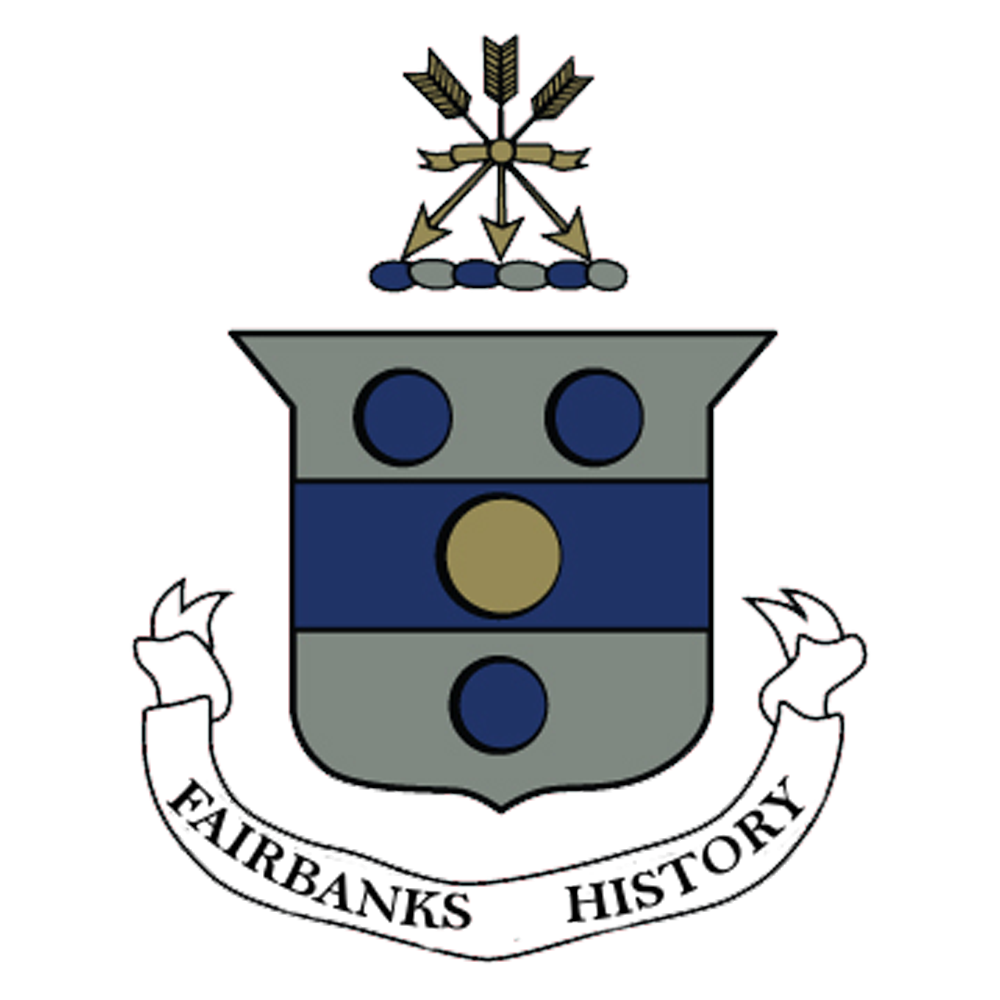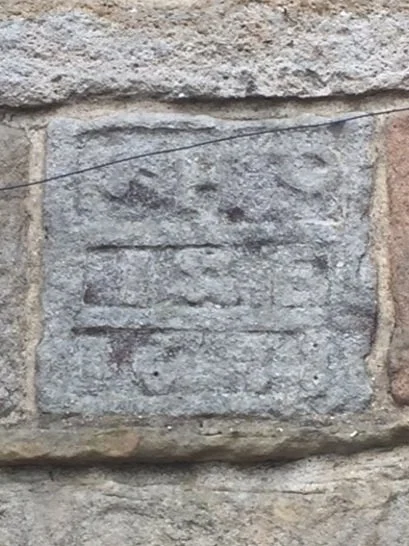Mystery of the When and Where the Fairbanks Family Sailed From in England to Get to New England.
Deciding on a Port
Choosing to risk their lives and their livelihood to leave England for a new unknown world could have been enough to dissuade the Fairbanks family from emigrating to the New World. Choosing how they would make that journey must have added an even greater burden.
The Fairbanks family lived in Sowerby, West Yorkshire, England before they emigrated. Sowerby is located in the central part of Northern England. Steep treacherous hills were barriers to the west and north. There were no immediate navigable rivers or waterways close to them in any direction. Even land travel was over narrow packhorse train paths that mostly provided transportation across the country for wool and wool products.. Wheeled vehicles were not available.
England is the size of Alabama. The seaports were from 55 to 300 miles away from Sowerby.. Once they arrived at a port, a ship must be available and the weather favorable to sail. The family had to bring or buy provisions at the port to last them a year in the New World. Heavy tools had to be carried to build a place to live and open new land. Finally, the family had to pass health checks and obtain licensures to be permitted to leave England.
From 1573 until 1677, there were requirements for “Registration of Licensure to Pass Beyond the Ports.” Today we call it a “passport.” This document would give us the date and port of departure. Unfortunately, these documents for the Fairbanks family have not been discovered.
Early Passenger Ships to the New World
We can be certain the Fairbanks family was not on the earliest passenger ships to the New World. Jamestown, Virginia, was settled in 1606 by a predominately male populations. Those ships, the Susan Constant, Godspeed, and Discovery, sailed from London on the west central coast of England, on December 20, 1606.
This was eleven years before Jonathan married Grace in Halifax, England.
The Mayflower left Plymouth, England, in 1620 under William Brandford. Separatists families took this ship along with profiteers. Together established Plimoth Colony. The Fairbanks were Puritans, not Separatists, and are not on any of the preserved Mayflower manifests. It is also believed that Jonathan and Grace’s children were all born and baptized in England even as late as 1629.
In 1630, John Winthrop led eleven ships out of Yarmouth, Isle of Wright, in southern England to travel to what became the Massachusetts Bay Colony. There were some Yorkshiremen on these ship manifests, but not the Fairbanks.
With this information, we only know that the Fairbanks Family, probably didn’t come until after 1630. We still don’t know how the Fairbanks family who settled Dedham in 1636/37 traveled from England.
Later Ship Manifests
To get a better idea of the Fairbanks travels, we can examine what is certain about the family and later ships that voyaged to the New World.
It is estimated that only about 50% of all ship manifests from the Great Migration (early 1600s) from England to the New World have survived. Some manifests show where the ships embarked, where the passengers debarked, when they traveled, and a list or partial list of passengers. Sometimes the documents showed where the passengers lived in England prior to emigrating. Historical records from New England often show where specific people settled.
By knowing where the Fairbanks family lived in England and where they lived shortly after they arrived in New England, we can use information about others who immigrated to Watertown and Dedham about the same time to make assumptions and further our study about our family.
Colonial records say that Jonathan and his family emigrated from Sowerby, West Yorkshire, England. In the last blog, Fairbanks Ancestors and their Locations in Northern England, starting in the 13th Century, we see the extended Fairbank family held much of land in Sowerby for over 200 years, including the time Jonathan’s family’ emigrated. It’s pretty clear that the Jonathan Fairbanks family lived in Sowerby before emigrating.
We know the family went to the Massachusetts Bay Colony. Jonathan is first found in the Massachusetts Bay Colony in Watertown, approximately ten miles up the Charles River (Quinobequin) from Boston (Shawmut). He was the first to sign the list for the second round of land grants in Dedham in 1636. By March 23, 1636/37, he was accepted as a resident of the new town of Dedham.
Let’s look at ports of England during the early 1600s and ship manifests traveling to the Massachusetts Bay Colony to get an idea of the task that laid before the Fairbanks to fulfill their wish to emigrate from England. England was riddled with religious, political, environmental difficulties, and class limitations. The Fairbanks family, like many others hoped to immigrate to a land they felt would hold more opportunities.
England’s Ports
In choosing a costal port, the Fairbanks family in the central part of Northern England had to consider what they must take with them to survive in an unsettled world. The budding Massachusetts Bay Colony had little support of any kind for newcomers. The family had to transport or buy those items at port. The Fairbanks family had many barriers to transporting their belongings the 55 to 300 miles to port.
The three busiest sea ports in England in the early1600s were London, Bristol, and Hull, in that order. About 50% of the emigrants are known to have left from London (200 miles from Sowerby).
From the website, Packrat, ports that had ships traveling to New England with passengers were as follows. Starred ports indicate they had numerous ships departing for New England.travels from them.
East Coast England on the North Sea
*London (200 miles) - central England
Gravesend associated with London.
Ipswich - Suffolk ( 85 miles north of London and 200 miles south of Hull)
Hull (86 miles east of Sowerby) – northeast on the Umber/Hull River in northeast England
Whitby - north of Hull
West coast
*Bristol (200 miles south west of Sowerby)
King’s Road at the mouth of the Severn River – northwest of Plymouth
Chester (65 miles miles northwest of Sowerby) – Northwest coast, south of Liverpool
(Liverpool was not an active port at that time)
Southern England
*Plymouth, England (312 miles Southwest of Sowerby) - Southwest, England
Barnstaple - just north of Plymouth on the River Plym
*Southhampton (255 miles south of Sowerby) - south central England, near the English channel *Yarmouth - Isle of Wight, near Southhampton
Cowes (only 13 miles from Yarmouth)
Falmouth (369 miles south of Sowerby) - very southern tip of England
Ports Nearest to Sowerby
The first thing Jonathan might consider when transporting his family and goods to a port was distance. The two closest ports, since Liverpool was not an active port at that time, were Chester to the west (south of Liverpool), about 65 miles from Sowerby and Hull about 86 miles to the east from Sowerby. London, the most used port was south southeast, 202 miles away. Other ports were even farther away except Whitby which appeared to be more involved in ship building and Ipswich was active in wool export, but appeared to trade primarily in Europe.
The second consideration was the ease of transporting personal belongings and a family of eight over those distances. If they couldn’t take their own belongings, they had to purchase provisions and all other items at port or chance procuring them in the budding colony.
Main Arteries of Travel were mere Packhorse Trails for Transporting, Wool, Wool Products and Other Goods Across England.
There was not a system of roads in England that was passable by carts or carriages. There were early Romans built roads, but by the early 1600s, the main arteries were only narrow trails used by the packhorse trains carrying baskets or panniers of wool, wool products, and other goods. Wheeled vehicles were rare out of the large cities except for handbarrows or wheelbarrows.
Generally, travel was by foot and very difficult. To the north and west were the Pennine Mountain or Hills. Daniel Defoe described travel over the Pennines as “All the way is thus up hill and down so that one ascends to the clouds and descends to water level about eight times.” The land leveled east of Sowerby at Halifax, about 3.5 miles away. Even so, land pathways could be impassible due to rains in the winter which could last through May.
River Transportation
Transportation by river was faster, more reliable, and easier on cargo than over ground. However, rivers could flood during the winters or become low, impeding transportation during the summer. Later documentation states that pack train transportation for the same item could cost eight times more than river transportation.
There were essentially two river systems that might have assisted the Fairbanks family in getting to a seaport. The first was the Severn River to Bristol (200 miles away). Reverend Richard Mather who left Warrington, Lancashire kept a journal of his travels and journey. He included other passengers such as, Matthew Mitchell, a well-respected Yorkshire merchant. They took the James of London along with “100 honest passengers, honest people of Yorkshire” to Boston in 1635. Richard Mather was only 24 miles from the Chester seaport, but embarked at Bristol 161 miles away. They didn’t always use the nearest seaports.
Severn River to Bristol
The Severn River flows on the east side of England. It was the second busiest river in the seventeenth century.
This river has always been navigable from Shrewbury, the town on that river nearest to Sowerby, 96 miles over land south southeast. During the early parts of the journey, the Fairbanks family probably would have dealt with the steep Pennine Hills on foot.
Once at Shrewbury, they would board a vessel to take them to Bristol. This would not be free. The towns providing bridges over the river in route enacted tolls for the boats using the river.
Reverend Richard Mather from Warrington, Lancashire, made his way to Bristol in a week. However, he didn’t have to deal with the Pennines, and he would have been about forty miles closer than Sowerby.
Rivers of Yorkshire
Calder and Humber
Rivers of West Yorkshire
Rivers of West Yorkshire and the towns along the way to the North Sea.
The nearest river or rivers the Fairbanks had access to were the River Calder and River Ryburn. However the Ryburn was considered only a stream then. Both go past Sowerby. One from the north and to the east and the other to the west. Neither was deep nor wide enough to be navigable.
The River Calder flowed east and became navigable at Wakefield about twenty miles, at least a day or more walk from Sowerby. A short distance after the land leveled off at Halifax, the eastward flowing Calder joined the River Aire and together they flowed into the River Ouse coming from the north.
Finally all three rivers o these rivers became the Humber River which was a true system of river navigation for even heavy loads coming into the port at Kingston upon Hull. The Humber finally joined the River Hull from the north that would take the family to the port at Kingston upon the Hull.
At Hull, the family’s belongings would be loaded onto the ship within the mouth of the river, like many other ports of England. From there, when the weather was favorable, the ship would sail into the North Sea and then south around southern England.
Whether this port would initiate a transatlantic voyage or if the ship would stop at other ports, like London, and take on cargo or other passengers, it’s difficult to say. The Fairbanks may have had to change ships before beginning the transatlantic part of the voyage.
From these observations, it appears that Hull would have been the most convenient port for the Fairbanks family to use for emigration. However, take time to look at the various ports that other Yorkshiremen emigrated from. The English that emigrated seemed to go to great lengths to leave the country.
Other Yorkshire and Lancashire Voyagers to the New World
The Mayflower
Plymouth, England
1620
William Bradford was born in West Yorkshire. He was orphaned early and grew up in Scrooby, England, about 64 miles west southwest of Sowerby. He became Governor of Plimoth Colony.
Miles Standish is believed to be from Standish, Lancashire near the area John Prescott might have lived. Although Standish was not a Separatist, he was hired as military coordinator of Plimoth
The Massachusetts Bay Company
1630 from Yarmouth
Sir Richard Saltonstall of Warley, West Yorkshire, only eight years older than Jonathan Fairbanks, became the first assistant to Governor John Winthrop of the Massachusetts Bay Colony. He also founded Watertown before returning to England with his daughters. His sons remained in the Colony. Sir Richard was considered a Londoner at the time he sailed with John Winthrop from Yarmouth.
There are other Yorkshiremen listed on manifests that accompanied the eleven ships led by John Winthrop.
The Griffin
1633
Richard Fairbank is believed to have come on the Griffin in 1633 with illustrious men such as Reverends Cotton Mather, Thomas Hooker, and Samuel Stone. They arrived in September 1633.
Richard’s relationship to Jonathan is unknown. He remained in Boston and became the first postmaster between England and the Colonies in 1639.
Jonathan’s family nor Richard and his wife are found on the Griffin’s manifest. It’s Richards history after landing that place him on that ship He was accepted into the Boston Church in October at the same time as many of the voyagers of that ship. Richard’s wife, Elizabeth joined the church a month later.
The James
May 23, 1635 from Bristol
Reverend Richard Mather documented the voyage that carried Matthew Mitchell, the respected merchant from Yorkshire, and his wife Susan and Jonathan Mitchell. Their destination was Concord, the other town that was granted land at the same time as Dedham. This ship also carried “100 honorable Yorkshiremen.”
The Truelove
1635 from London
The Bearstow brothers, George and William, are documented on some internet sites as from West Yorkshire. However, another source states they were from Buckinghamshire. The Bearstows settled in Dedham in the Colony at the same time Jonathan Fairbanks was accepted there.
The Anne
1636
Abraham Shaw, a tailor and miner from Heptonstall, Halifax Parish, West Yorkshire, brought his wife and children to settle first in Watertown and then in Dedham. Abraham Shaw was from the same parish as Jonathan in England and both settled in Dedham.
John of London
Summer 1638 from Hull
After Jonathan and his family were settled in Dedham in the Colony another ship of great importance carrying Yorkshiremen sailed from Hull to New England. This Indicate Hull was also a port used by other Yorkshiremen for emigration. It was the closest and apparently easiest port for the Fairbanks family to reach.
The John of London was important because it transported the first printing press to Boston, Massachusetts Bay Colony. Reverend Joseph Glover, owner of the press, and his family, accompanied the press. Their indentured servant and his family, Steven Daye, would operate the first colonial printing press in Cambridge.
Reverend Ezekiel Rogers organized eight to twelve ships along with the John of London out of Hull to transport twenty one families from Yorkshire to New England. http://www.packrat-pro.com/ships/johnoflondon.htm Ezekiel and his followers landed at Salem. The John of London took the printing press to Boston.
Another illustrious man originally from Warley, West Yorkshire, Reverend Richard Denton, is said by some to have come on this ship The John of London from Hull, but others say he sailed later.
Summary
We still don’t know the exact port or the date when the Fairbanks family sailed from to came to the New World. But understanding the ports, waterways, and land travel available and information about other Yorkshiremen’s traveling out of England, we have a better understanding the difficult decisions, the hardships, courage, and fortitude it took to make the journey. The Fairbanks family’s need and desire to leave England had to far outweigh the onus of traversing England and then the Atlantic Ocean. Perhaps as more information becomes available, the picture of their emigration will become ever clearer.











